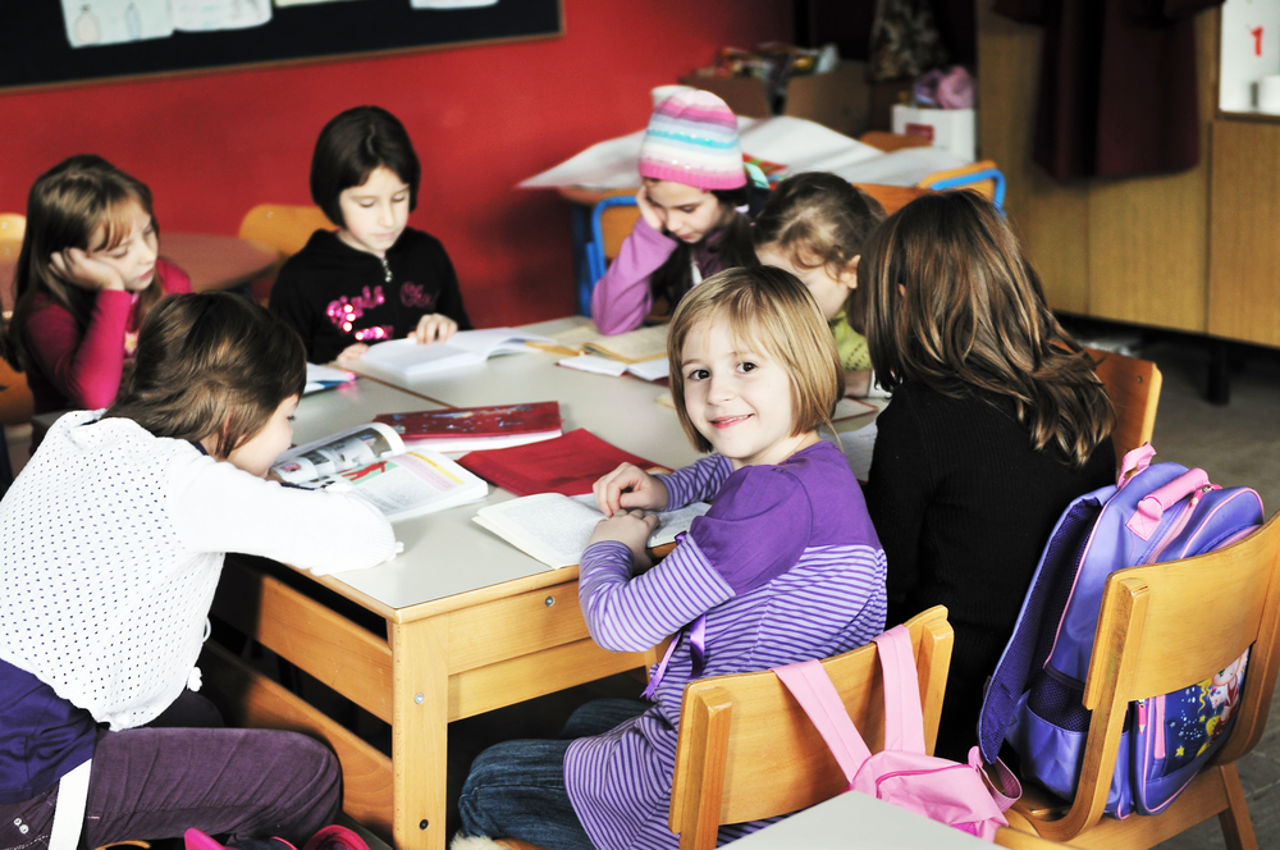Primary school: nearly one in two pupils attends a multi-age class.
When we talk about classes where children of different ages learn together, we usually think immediately of single-grade classes in small rural schools. This association of ideas was reinforced in the collective imagination by the success, in 2002, of Nicolas Philibert's film, Être et avoir, which followed the daily lives of students in Saint-Etienne-sur-Usson, in Auvergne.
Sylvie Jouan, University of Montpellier

However, "multi-age classes" or "multi-level classes" actually cover a wide variety of situations. The spectrum ranges from single classes accompanying children from preschool to fifth grade to classes comprising only two levels—or double classes. These configurations reflect very different contexts and ways of operating, and the importance of each has shifted over time.
An underestimated reality
The norm in rural France throughout the19th century and continuing into the first half of the20th century, until the rural exodus, the single-class school can now be considered an endangered species: according to figures from the French Ministry of Education, in 2018 there were only 667 single-classroom schools out of nearly 15,000 public primary schools, or less than 4.5%. This is despite strong local support, as a village that loses its school knows it is on the road to desertification.
At the same time, double-grade classes, or mixed-age classes, have continued to develop in urban areas, so that it is now incorrect to associate multi-age classes with rural schools. The figures provided by the ministry's statistical services remind us of this overlooked reality: in mainland France, nearly one in two children is now enrolled in a class combining several levels (48.6% at the start of the 2015 school year), in both rural and urban areas, precisely because of the presence of multi-level classes in urban areas.
There are certainly more rural students enrolled in multi-age classes, but this type of grouping now affects the entire country—nearly 40% of urban students are enrolled in multi-age classes.
The problem is that such an overlooked reality is accompanied by a lack of pedagogical reflection on the potential benefits of this type of grouping, which is most often considered as a variable for adjusting to fluctuating student numbers and the number of positions in a school.
Cooperation among students
However, French studies on multilevel classes in rural areas reveal a real added value in terms of academic success, especially when there are a large number of levels.
This result runs completely counter to the decisions of a ministry that, since the 1960s, has continually grouped small rural classes together to form more homogeneous groups. With one model in mind: the single-level urban classroom model. However, this objective still overshadows the highly interesting results of the teaching practices developed in multi-age classrooms.
This is the case when it comes to the use of time: students in multi-level classes are less likely to find themselves waiting around. Since teachers cannot be with every level at the same time, these classes are places where new ways of helping each other and working independently are invented, so that they can be considered, overall, as laboratories for educational innovation.
Some teachers in urban areas have understood this well by setting up, mainly in working-class neighborhoods, three-level "cycle" classes, where the heterogeneity of ages increases the opportunities for cooperation between students, particularly tutoring.
School cycles
Conversely, mixed-age classes, which are most often imposed to even out student numbers in each class within a school, are met with considerable resistance—both from teachers, who see them as an extra workload, and from parents, who fear for their children's success.
And the only French study on mixed-ability classes does nothing to allay these fears, as it shows no positive impact on student achievement, except when teachers have chosen this configuration and decided how to divide students, taking this factor into account.
Thus, because multi-age classes are virtually unheard of in the French education system, the default option is to have two levels, imposed when it is not possible to keep the class at a single level, to the detriment of classes with at least three levels, even though research would suggest we should do the opposite.
A three-level class allows the entire cycle to be covered. However, these famous learning cycles—which have structured students' schooling since the 1989 framework law —are still struggling to gain widespread acceptance, even though they meet the much-vaunted requirement of taking into account differences in students' learning speeds.
Innovation lab
However, multi-level classes with a high degree of heterogeneity can be seen as a way of breaking definitively with the simultaneous teaching method, a method inherited from the schools of Jean-Baptiste de La Salle dating back tothe 17th century, which consists of having everyone do the same thing at the same time.
This is the method we all experienced as students inthe 20th century at every stage of our schooling, and we can guess, without being great educators, that it does not take into account the diversity of students: the fastest students get bored, while those who encounter difficulties do not progress at their own pace.
Therefore, to say that multi-age classrooms are laboratories for educational innovation is to hypothesize that reflection on how this type of classroom functions, and in particular on its tools for autonomy and differentiation, is a lever for rethinking the organization of classrooms in line with the objectives of the inclusive and caring school we are aiming for in the 21st century.e century.![]()
Sylvie Jouan, Professor of Philosophy, Trainer in Pedagogy/Knowledge of the Education System, University of Montpellier
This article is republished from The Conversation under a Creative Commons license. Readthe original article.